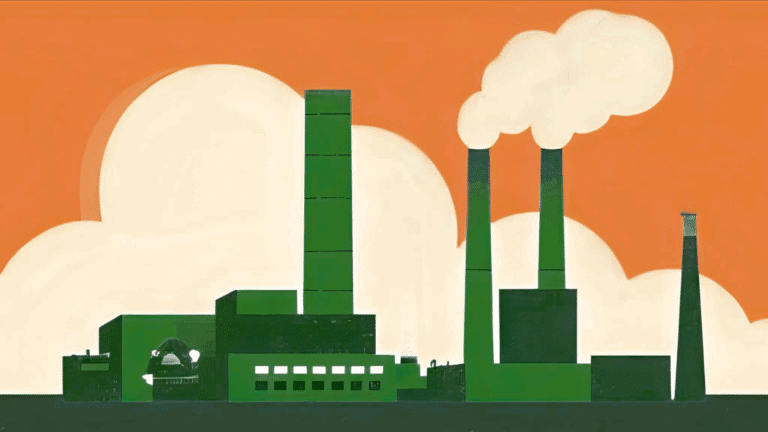Download the commentary
In 1932, Bahrain discovered the first oil on the Arab side of the Gulf and set the stage for the much bigger bonanza in its neighbors. It has taken a long time for the small island to follow up. But the recent announcement of an enormous, 80 billion barrels shale oil find has raised hopes for the country’s economy, likely removed one adherent to the OPEC/non-OPEC pact, and put shale oil and gas development in the Middle East firmly on the agenda.
The mid-case estimate for the new resource is 81.5 billion barrels of oil and 13.7 trillion cubic feet of gas in place. Based on US experience, 5-6 percent of this, or exceptionally up to 10 percent, might be recoverable. On this basis, Bahrain would jump ahead of Oman in proved oil reserves. Separately, the country also announced it has 10-20 trillion cubic feet of tight (low-permeability) gas resources in the pre-Khuff formations below its main existing gas field onshore.
For comparison, the Wolfcamp shale in Texas’s Permian basin is estimated by the US Geological Survey to hold 20 billion barrels of recoverable oil, and Argentina’s Vaca Muerta shale, one of the most promising outside the United States, to contain 270 billion barrels of oil in place of which 16 billion bbl are recoverable.
Halliburton, the US service company which has been assisting in appraising the resource, said it was on the “edge of the conventional-unconventional type of plays.” It lies in shallow water, less than 20 meters deep, off the western coast of the island. Saudi Arabia, and its own first field of Dammam, are just 25 kilometers away, the countries linked by the King Fahd Causeway.
Commercial offshore shale oil production would be a first for the worldwide industry. We still do not know if any of the resource will be commercially producible – service industry costs are likely to be higher than US levels, at least initially, while good flow-rates will be needed to compensate for the higher cost of offshore wells. It might be possible to reach at least some of the reservoir by horizontal drilling from onshore sites, or artificially-dredged islands.
Bahrain is looking to appraise the discovery itself with the help of service companies including Schlumberger and Halliburton, which will drill two wells this year, and then to look for international partners. Occidental, a company with US shale oil expertise, was active in the country until 2015, but its appetite for the Middle East has waned. Chevron also explored there, while Shell has assisted with studies of LNG imports, and ENI, successful in deepwater Egyptian gas, visited Manama recently. Other strong gas players in the wider region, Total, ExxonMobil and BP, may also be contenders. The government will need to offer enticing fiscal terms to compensate for the technical difficulties and lure some investment from the booming US shale sector.
The country plans to produce 200 000 barrels per day and 1 billion cubic feet per day of gas from the finds within five years, and to start gas production by August this year.
The discoveries are badly needed. Though Bahrain has diversified its economy significantly over the years, more than 80% of its government revenues come from petroleum. With anticipated revenues of $6.1 billion in 2017/18, the budget deficit is about $3.5 billion (8-10 percent of GDP) and debt is likely to rise above 100% of GDP in 2019. The three main ratings agencies rank Bahrain’s sovereign credit at junk levels, with S&P cutting it to B+ in December and Fitch to BB- in March. The timing of the announcement may be designed to boost confidence in the island’s shaky finances, and has to be viewed with caution given the early stage of appraisal.
Its onshore Bahrain field, the original 1932 find, has dwindled to about 44 000 barrels per day, and the country is heavily reliant on its half-share of revenues from the Abu Safah field operated by Saudi Aramco, amounting to 150 000 barrels per day. Gas production, which supplies power generation and Alba, one of the world’s largest aluminium smelters, has been on a plateau around 1.5 billion cubic feet per day for some years, and Bahrain is planning to start liquefied natural gas (LNG) imports from next year.
Indicatively, if development and production costs for the new find were $40 per barrel, and the oil price were to be $60 per barrel, production of 200 000 barrels per day would bring in almost $1.5 billion of net revenues annually. The gas would replace up to 800 million cubic feet per day of LNG imports, but offset by the likely high cost of the tight gas production, saving net another $1.5 billion or so. Together, these resources would trim but not eliminate the deficit. The prospect of the new output will, though, take some pressure off Bahrain’s Gulf allies, who have been supporting it financially.
As part of the OPEC/non-OPEC pact, Bahrain was meant to reduce output by 10 000 barrels per day, of which it has actually cut about 4000 barrels per day. As currently constituted, the deal expires at the end of this year, but Saudi crown prince Mohammed bin Salman has talked of a “10 to 20 year agreement”. If a long-term framework indeed comes to pass, Bahrain will have to break from the pack, or secure an exemption. It would be in a similar position to Kazakhstan, which has basically ignored the agreement due to ramping up its giant Kashagan field, or Iraq which has significant plans for future production growth.
This find marks the arrival of shale oil in the Middle East. Tight and shale gas has already been on the agenda: Saudi Arabia has been planning on shale gas for some time, starting output in its remote north-west, and has already drilled hundreds of wells in the Jafurah Basin, which lies between the Gulf to the east, the world’s biggest oil field Ghawar to the west, and Bahrain to the north. Saudi Aramco’s general manager of unconventional resources, Khalid Al Abdulqader, said in March that the Jurassic source rocks in Jafurah were similar to Texas’s famous Eagle Ford shale in quantity and quality. Baker Hughes has estimated the kingdom’s shale resources at 645 trillion cubic feet (its current official reserves are just 298 Tcf).
Given their proximity, the newfound Bahrain resources probably stretch into Saudi and perhaps Qatari waters. Kuwait has been developing tight, sour (containing toxic hydrogen sulfide) oil and gas from its deep northern Jurassic reservoirs. BP’s development of the Khazzan tight gas field has allowed Oman’s LNG export facilities to run at full capacity this year for the first time since 2007. These initial steps demonstrate that the region’s exceptional geology in conventional fields is matched by world-class source rocks and tight gas reservoirs, which offer fertile ground for the same techniques that have proved successful in North America.
Increased domestic gas production reduces the region’s appetite for LNG imports, which has been an important driver of rising world prices. LNG imports help set a price benchmark higher than traditional subsidized levels, and make governments aware of the viability of more expensive unconventional gas.
Bahrain and Oman have both been adherents to the OPEC/NOPEC pact, with Oman particularly influential. If they and other smaller Middle East producers, such as Jordan and Egypt, can develop their shale oil resources, that means more challenges for the OPEC/NOPEC pact over its hoped-for life of one to two decades.
The broader the base of shale oil output, the more robust it will be, easing fears of infrastructure constraints and exhaustion of sweet spots in the main US plays. If large-scale production of tight oil can move beyond North America to promising areas such as Argentina, Australia and Bahrain, and into the shallow offshore domain, it offers new opportunities for experienced US firms to take their skills international – and should push back fears of a renewed price spike.




